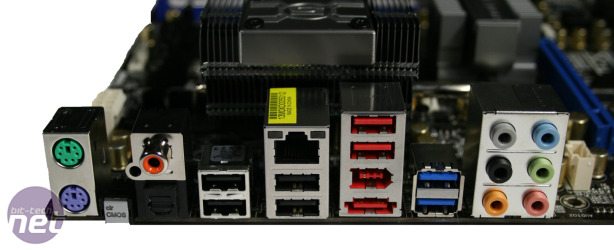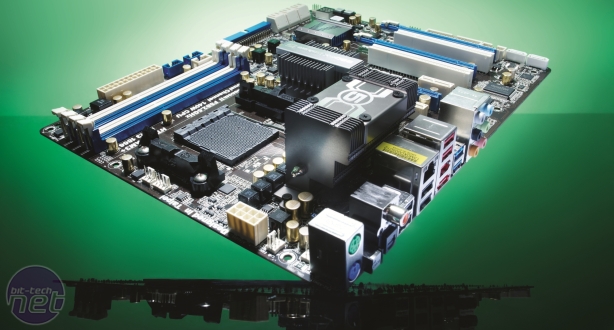Performance Analysis
There was little to separate most of the motherboards in many of our benchmarks. The Deluxe5 returned fairly average results, although its Gimp image editing score of 1,089 was eight points clear of the rest of the competition, and 50 points faster than the considerably more expensive Gigabyte 990FXA-UD7. Its HandBrake H.264 video encoding score of 2,032 and multi-tasking test score of 1,021 are the second slowest on test though. Overall, the Deluxe5 scored 1,381, which is second from bottom, although only by 17 points.The Deluxe5 struggled in Arma II too, managing a minimum frame rate of only 56fps – 8fps slower than the fastest motherboard on test, the Asus Crosshair V. The Deluxe5’s SATA performance was mediocre too – the SB850 chipset mustered a read speed of 381MB/sec and a write speed of 355MB/sec. This is much slower than the Asus Sabertooth 990FX, which pushed our OCZ Vertex 3 SSD to its limit, with a read speed of 547MB/sec and a write speed of 474MB/sec. The Marvell SE9120 controller wasn’t much better, recording a faster read speed of 403MB/sec, but a slower write speed of 211MB/sec.
Click to enlarge
Unusually for an 890FX-based motherboard, the Deluxe5 sports an EFI, but it was a very mixed bag. It was relatively well laid out, but it proved to be laggy and unresponsive. Even more annoying was the fact that, while you’re able to see the CPU frequency change after you’ve adjusted the CPU multiplier, the display for this is at the opposite end of the page – we were constantly scrolling up and down. This was particularly irritating due to the lag, and there weren’t many options from which to choose either. The EFI was also very poor at recovering from ambitious overclocks, often requiring five or more reboots before we regained control.
In the end, we managed to push the HTT to a healthy maximum of 340MHz by raising the CPU NB voltage to 1.35V, the NB to 1.335V, the SB to 1.3V and finally the HTT to 1.3V. Unfortunately, we had to drop the HTT to 295MHz when overclocking the CPU. Combined with a CPU multiplier of 14x, the CPU operated at 4.13GHz, which required a vcore of 1.5V. This saw an improvement in our benchmarks, with the overall Media Benchmarks score gaining 238 points to total 1,619, and Arma II seeing a 10fps rise to a minimum frame rate of 66fps.

Click to enlarge
Conclusion
While the 890FX Deluxe5 is one of the cheapest AM3+ motherboards we've seen recently, it has a few significant drawbacks. It was a nightmare to overclock, taking far longer than any other motherboard to reach its limits, and regularly failing to recover if we pushed it a little too far. The EFI is a poor effort compared with Asus’ offerings, particularly as it’s so laggy – overclocking this board was a chore rather than a pleasure. Due to the poor EFI, the board was marked down heavily on features, even though it includes plenty of useful bits and bobs on the PCB.
Its saving grace is that it has on-board power and reset switches, which meant that endlessly rebooting the PC after failed overclocks was at least easy, if very time-consuming. We can forgive the inclusion of the previous-generation 890FX chipset, as ASRock says that this board will be compatible with the forthcoming Zambezi CPUs – even AMD says the updated 990FX chipset doesn’t add anything. However, there are much better examples of Socket AM3+ motherboards out there for not a lot more cash
-
Value17 / 25
-
Features16 / 30
-
Speed37 / 45


MSI MPG Velox 100R Chassis Review
October 14 2021 | 15:04










Want to comment? Please log in.